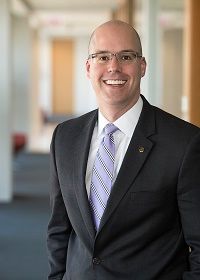Article
AMA's New President Aims to Lower Burnout Rates
Author(s):
The new president of the American Medical Association is the group's youngest president in 160 years. He plans to focus on public health, revamping medical education, and reducing burnout during his term.

The new president of the American Medical Association says his group is uniquely positioned to be the voice of healthcare providers and influence public policy on their behalf.
“There is no organization other than AMA that has the heft, the respect, and the convening power to bring the entire profession together around issues of central importance to the profession and patients,” said Steven J. Stack, MD, who was inaugurated as the AMA’s 170th president Tuesday afternoon.
Stack, an emergency physician from Lexington, KY, is the group’s youngest president in 160 years. He succeeds Robert Wah, MD.
In an interview with MD Magazine, Stack cited Congress’ recent repeal of the Sustainable Growth Rate (SGR) formula as evidence of the AMA’s clout. SGR had long been a source of fiscal uncertainty and frustration for doctors. Stack said the AMA organized 750 physician associations to sign its letter calling for SGR’s repeal.
Stack laid out 3 chief goals for his one-year term. First, he wants to improve outcomes for the 86 million Americans with pre-Diabetes and the 70 million Americans with hypertension.
Secondly, Stack aims to revitalize the nation’s medical education system and make improvements in how students are prepared with relation to population health management, health disparities, and legal and financial issues.
Finally, he hopes to improve physician morale and lower burnout rates. The association this week launched STEPS Forward, a program aimed at helping physicians boost efficiency, incorporate technology, and improve patient health. The hope is that boosting efficiency will help doctors feel as though they’re able to focus more on helping patients.
While Stack is optimistic about the opportunities to improve healthcare in those 3 areas, he’s less optimistic when it comes to ICD-10.
The AMA is staunchly against the implementation of the new ICD-10 coding system, which is scheduled to take effect this October.
“It is our opinion at the American Medical Association that the cost and the potential negative consequences of ICD-10 are not justified by the benefits others purport will be realized,” he said.
The AMA and other groups are in the midst of a letter-writing campaign seeking a delay of ICD-10 implementation. But Stack isn’t sure those efforts will succeed, so the AMA is concurrently asking the US Department of Health and Human Services to make a number of concessions, which he said would eliminate or minimize potential payment disruptions.
Specifically, Stack wants HHS to use its preapproval authority to make sure claims continue to get paid even if glitches occur. He also believes the department ought to institute a 2-year grace period, during which physicians won’t be penalized for mistakes or system malfunctions.
More broadly, Stack said one key to his organization’s success in the coming years will be its ability to diversify its membership and leadership. He said the AMA has done a relatively good job when it comes to diversifying its leadership, noting that Wah was the first Asian-American president of the organization. The board also currently has its first openly gay member and African-American female member.
Yet, only 5% of the delegates at this week’s meeting fit into the group’s definition of “young physicians.” Stack said it is difficult to get early-career physicians to be active in the organization, since they’re often focused on starting families and building their careers. However, he said the AMA needs to make sure it’s constantly looking for new ways to engage different generations, for instance, by using social media and smartphone apps.
“I would say that we are on a journey, like all of society is, recognizing that diverse teams, broadly representative groups, make far better decisions and produce far better results,” he said.
There is room for the AMA’s membership to grow. The US has about 1 million physicians. Of those, 230,000 are AMA members.
Even as Stack was celebrating his inauguration, the association was naming his eventual replacement. Andrew W. Gurman, MD, an orthopedic surgeon from Pennsylvania, was elected president-elect of the AMA, putting him in line to take over the presidency next year.



